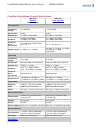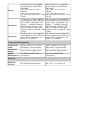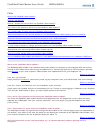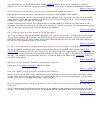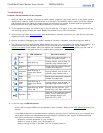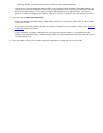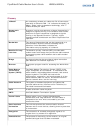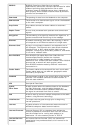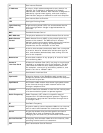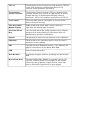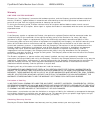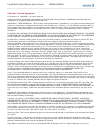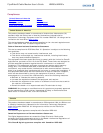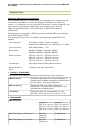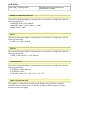
IP
See Internet Protocol
IP Address
A unique, 32-bit address assigned to every device in a
network. An IP address is composed of a network
address and a host address. Each network is assigned an
address by a government agency, and each company
administrator assigns an address to each host computer.
ISP
See Internet Service Provider
LED
See Light Emitting Diode
Light Emitting
Diode
A light emitting diode (LED) is a semiconductor device
that emits light when voltage is applied between its
terminals.
MAC
See Media Access Control
MAC Address
The physical address of the Media Access Control device.
Media Access
Control
Media Access Control (MAC) is the protocol governing
access to the network. The MAC device is located
between receive and transmit paths. Among its functions
are the controlling of ranging, the assignment of
frequencies, and the allocation of time slots.
Modem
A device that encodes (modulates) data from a computer
to a carrier wave for transmission across some type of
wire, and decodes (demodulates) data coming over the
wire to the computer.
Modulation
A controlled variation of any property of a carrier wave
for transferring data.
Network
Interface Card
A Network Interface Card (NIC) is a plug-in circuit board
installed in an expansion slot of the computer. The NIC
(also called an Ethernet card) takes parallel data from
the computer, converts it to serial data, packets it, and
sends it out over a 10BaseT cable.
NIC
See Network Interface Card
PipeLock®
A security feature of the PipeRider cable modem that
temporarily blocks communication between the computer
and the service provider.
PipeRider®
An Ericsson cable modem that allows high-speed access
to the Internet through a cable network rather than
through a telephone wire.
Protocol
A set of rules to be followed in order for the various parts
of a communication system to operate together.
Radio Frequency
Radio Frequency (RF) refers to a specific range of
frequencies in the electromagnetic spectrum. Signals in
this frequency range can be transmitted through the air
or through a wire.
RF
See Radio Frequency
Router
A system used to connect separate LANs into an internet,
and to route traffic between the constituent networks.
Server
A type of processor that provides specific services to
network users, such as managing file access and
managing the exit and entry of information to LAN users.
Service Provider
A company that connects networks to the Internet, thus
providing Internet service to customers.
TCP
See Transmission Control Protocol



